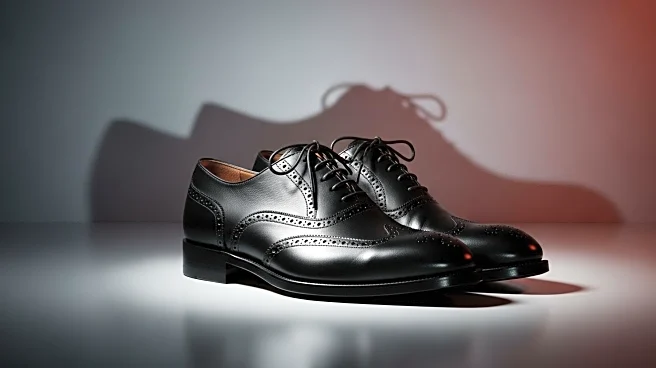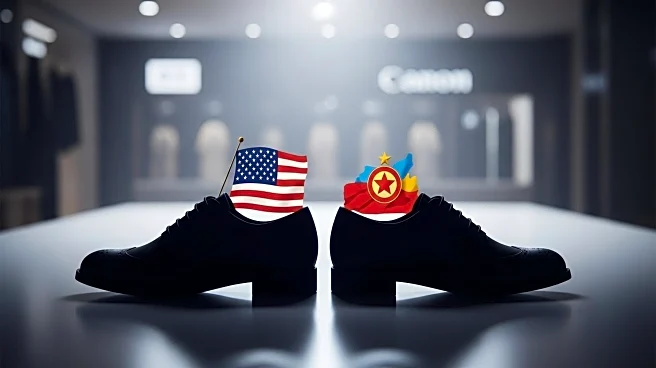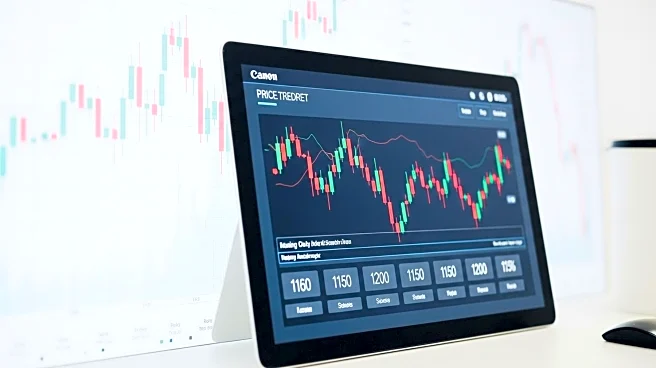What's Happening?
Shoe prices in the U.S. have seen a significant increase in August, driven by inflation and tariffs on footwear imports. According to the Footwear Distributors and Retailers of America (FDRA), retail prices of footwear climbed 1.4 percent, marking the highest increase in 17 months. Women's shoe prices rose by 2.8 percent, while children's shoes saw a 0.9 percent increase. Men's shoe prices slightly decreased by 0.2 percent but have generally been on the rise over the past 19 months. Gary Raines, chief economist at FDRA, highlighted that tariffs are a major factor affecting the footwear market, with duties paid on imports soaring by 108.7 percent year-over-year. This trend is expected to continue, potentially leading to further price hikes.
Why It's Important?
The rising shoe prices have broader implications for the U.S. economy and consumers. As footwear is predominantly sourced from abroad, the increased tariffs significantly impact retail prices, affecting consumer spending and potentially leading to decreased demand. This situation poses challenges for retailers and manufacturers who may need to adjust their pricing strategies or sourcing methods. Additionally, the ongoing inflationary pressures could influence economic policy decisions and consumer behavior, as higher prices may lead to reduced discretionary spending.
What's Next?
If tariffs continue to rise, the footwear industry may face further price increases, prompting retailers to explore alternative sourcing options or negotiate tariff reductions. Policymakers might also consider addressing tariff impacts to alleviate consumer burden. The industry will likely monitor inflation trends closely to anticipate future pricing adjustments.












